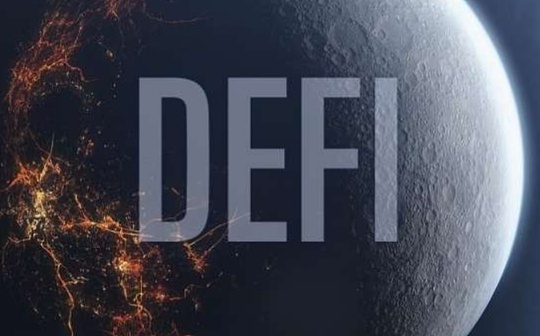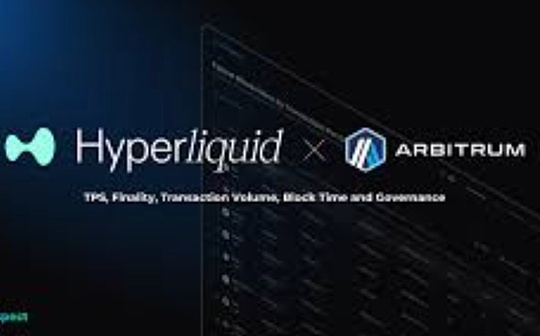
Author: derk Walkush
Due to the growth of L2, the Ethereum ecosystem is still the battlefield for most DEFI choices.However, the recent success of Solana, APTOS, and other high -performance chains shows that they will play an important role in the development of DEFI.
However, the difference between high -performance chain and Ethereum may be unable to fully understand the experienced DEFI builders in the Ethereum ecology.
Below, I will discuss the four most important technical differences I think I think it is related to the DEFI project.The builders who understand these characteristics of high -performance chains will be able to seize the opportunity that may not be achieved in the familiar Ethereum playground.
1: Volidation
A decisive characteristic of a high -performance chain is extremely high TPS.This technology improved has unlocked a series of DEFI applications that cannot be achieved on the Ethereum main Internet.At the current Ethereum L2, it is extremely difficult to achieve rapid confirmation, because not only must there be proof (ZK) and fraud proof of disputes (OP), but also the final confirmation of 12 seconds on the main network.Therefore, at present, a high -performance chain is the only feasible solution that can implement the order book on the full chain.Through the dynamic parallel method of technologies such as Block-STM, a newer CLOB (such as Econia) has the ability to minimize conflicts and maximum throughput.
In order to “complete the chain”, the order book must not only support the transaction settlement (asset transfer between wallets), but also to support the matching engine (where the trader bids).The latter is more difficult to host on the chain, because the order book must absorb a lot of spam.Although the order book requires better liquidity and throughput compared to AMM, they do not need passive LP, so it provides a more capital efficiency market structure for transactions.
There is another opportunity for the new project: Although the spot DEX is priced on the assets on the order book, DEX, which has synthetic derivatives, usually requires external infrastructure to provide prices, that is, the prediction machine.Although high -performance prophets are appearing, many traditional prophet machines cannot meet the low delayed needs of high -performance chains (within 1 second confirmation time).
2: GAS fee
The lower GAS cost, coupled with high throughput and low latency, has many advantages to the DEFI application builders on the high -performance chain, especially the DEX polymer.
The polymer obtains optimal prices from the liquidity sources of various chains (or even unders the chain).However, due to the high GAS and higher latency on the Ethereum main network, the price can usually only be retrieved from a single DEX or under the chain.
However, in the high -performance chain, the advantages of low cost and low latency enable the polymer to find the best price of assets in different liquid places.In other words, the polymer can exchange tokens on one DEX, but if another path provides better prices, it can choose to exchange it again on another DEX, or through a more complicated path.Therefore, the pricing of polymer is more competitive than the Ethereum main network on the Ethereum.
Solana’s story can explain the problem.Jupiter is the leading polymer of Solana, which controls about 80% of transaction flows (after filtering the robot).This is in sharp contrast to the Ethereum main network.On the main network of Ethereum, a large number of transaction flows are still performed through the front end of the DEX. Multiple polymer controls the order flow of ~ 40-50%, and there is no single front end control of more than 30-40%.This means that liquidity and order flow will be naturally decoupled on the high -performance chain. The polymer will always exchange the optimal price in multiple places. This introduces a natural incentive.(Because it may not be able to provide the optimal price).The source of liquidity (for example, AMM, order book) can try to build their own proprietary order flow, but they may not be able to compete with leading polymer in price.
In addition, the progress of the asset bridge infrastructure and the intention -based agreement makes the higher level of appearance possible: high -performance chain cross -chain polymer.As the activities are increasingly distributed in different architectures of different L1 and Ethereum ecology, a separate cross -chain polymer may be very promising.
Therefore, the polymer on the high -performance chain is also a huge opportunity.
3: Vermitteer selection
In order to support extremely high TPS, many high -performance chains have compromised and decentralized in its consensus agreement.They can achieve higher scalability through DPOS and verification clusters, and effectively improve the transaction communication speed by not broadcasting to the entire large node network.
As part of its consensus protocol, many high -performance chains use a certain leadership timetable, which is a set of pre -defined authenticants, which is responsible for sorting the transactions in the block.Therefore, transaction sorting depends on the verification of the leaders, because they are in the exclusive and established position.This is very different from Ethereum, and Ethereum verifications are pseudo-pseudo-randomly.
The selection methods of leaders or representatives are diverse, but the result of the timetable of certain leaders is that some verificationrs can build more blocks and get greater rewards. This is self -enhanced.More rights.In addition, in view of the higher requirements for status access (to support high TPS, parallelization, etc.), high -performance chains often have higher hardware requirements, which means that the entry threshold for verifications is higher (the form of previous costs).
This dynamic has created a series of advantages for the extensive pledge, especially for liquidity pledged tokens (although the choice of verifications on Ethereum is very important, it usually does not have much impact on the overall pledge yield).In essence, some of the liquidity tokens (LST) that can obtain the best verifications can obtain structural advantages through higher yields.Another opportunity is that the high -performance chain can also try to be similar to the shared safety/re -pledged layer of Ethereum, so that the projects that can access the best verificationrs can further increase the output by pledge.
4: building block construction
The block construction process varies from chain, but in a broad sense, there is a very large structural difference between the high -performance chain and the Ethereum main network, which has a great impact on MEV.
Use the schedule or commission method to verify that the transaction may bring challenges to the packaging transaction.Advanced first -out (FIFO) model sometimes requires the search device to send junk transactions to the chain to try to include these transactions, instead of ordering and sorting transactions in an orderly manner.Different GAS expense market design (especially the local expense market of Solana) also means that priority fees do not always increase the opportunity to be included in transactions.These architectures make MEV strategies (such as sandwiches attack) challenging.
In addition, some chains (especially Solana) do not have a public memory pool, which makes it difficult for external MEV searchters to search for transactions and sort it to perform MEV strategies.Pipeline flow and parallel blockchain like APTOS can randomly sort the transaction by randomly sorting transactions before the parallel execution processing phase.
Therefore, MEV opportunities on the high -performance chain are different in structure.The subtle difference in the blockchain architecture usually has a significant impact on MEV.For example, the JITO block construction auction on Solana is still a huge opportunity for builders.These architectures created opportunities for the new MEV infrastructure, but the theme is still under research, and it is not understood by everyone like the MEV on the main network of Ethereum.
At the end
Most of the high -performance chain ecology is still very early, and usually follows the development path of Ethereum DEFI.However, the slight differences mentioned above (there may be many other content I have not discussed) may greatly affect the development trajectory of certain industries and create huge opportunities for the DEFI builders.








